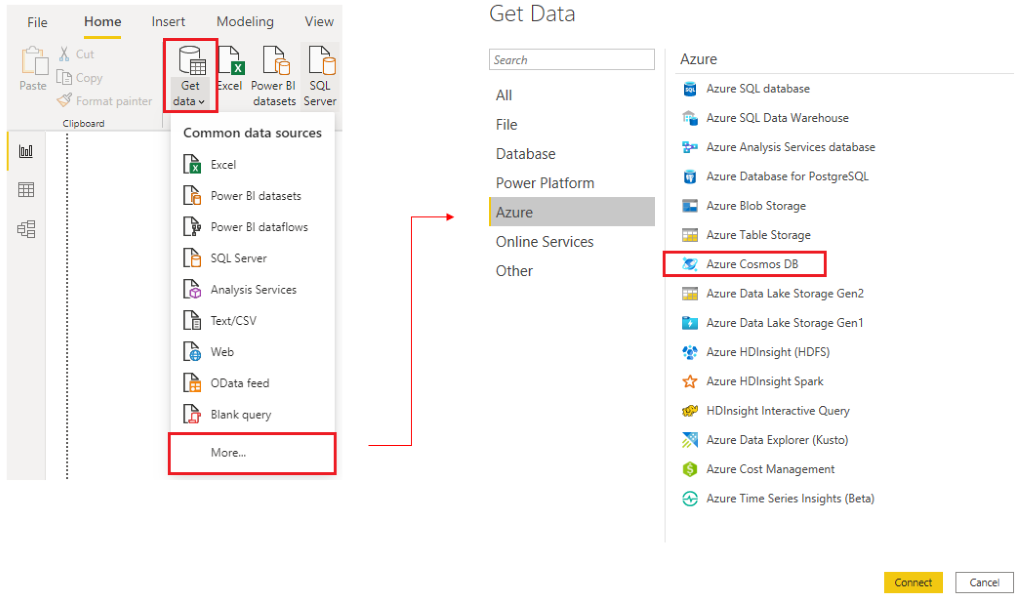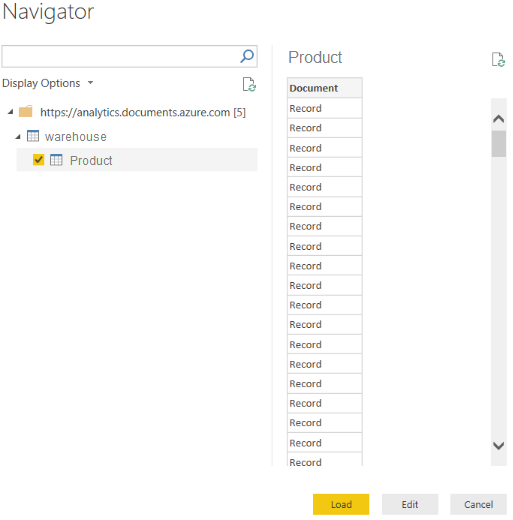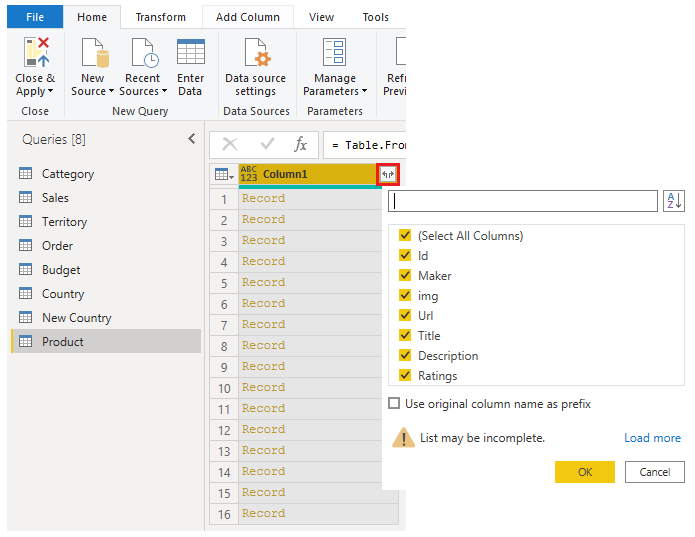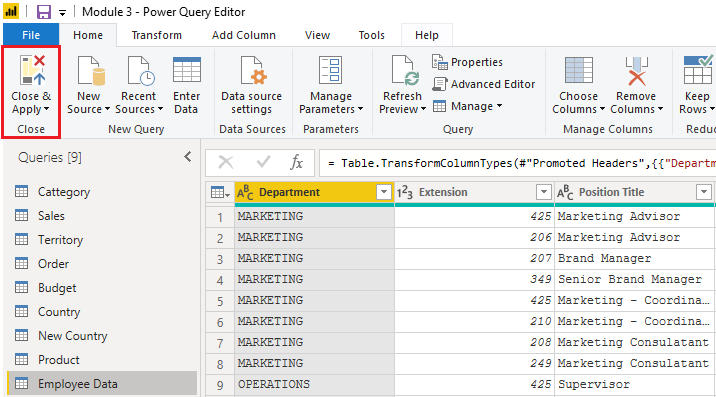Get data from a NoSQL database
Some organizations don't use a relational database but instead use a NoSQL database. A NoSQL database (also referred to as non-SQL, not only SQL or non-relational) is a flexible type of database that doesn't use tables to store data.
Scenario
Software developers at Tailwind Traders created an application to manage shipping and tracking products from their warehouses. The application uses Cosmos DB, a NoSQL database, as the data repository. Data is stored as JSON documents, which are open standard file formats that are primarily used to transmit data between a server and web application. You need to import this data into a Power BI semantic model for reporting.
Connect to a NoSQL database (Azure Cosmos DB)
In this scenario, you'll use the Get data feature in Power BI Desktop. However, this time you'll select the More... option to locate and connect to the type of database that you use. In this example, you'll select the Azure category, select Azure Cosmos DB, and then select Connect.
On the Preview Connector window, select Continue and then enter your database credentials. In this example, on the Azure Cosmos DB window, you can enter the database details. You can specify the Azure Cosmos DB account endpoint URL that you want to get the data from (you can get the URL from the Keys blade of your Azure portal). Alternatively, you can enter the database name, collection name or use the navigator to select the database and collection to identify the data source.
If you're connecting to an endpoint for the first time, as you are in this example, make sure that you enter your account key. You can find this key in the Primary Key box in the Read-only Keys blade of your Azure portal.
Import a JSON file
If you're working with data stored in JSON format, it's often necessary to extract and normalize the data first. This is because JSON data is often stored in a nested or unstructured format, which makes it difficult to analyze or report on directly.
In this example, the data must be extracted and normalized before you can report on them, so you need to transform the data before loading it into Power BI Desktop.
After you've connected to the database account, the Navigator window opens, showing a list of databases under that account. Select the table that you want to import. In this example, you'll select the Product table. The preview pane only shows Record items because all records in the document are represented as a Record type in Power BI.
Select the Edit button to open the records in Power Query.
In Power Query, select the Expander button to the right side of the Column1 header, which displays the context menu with a list of fields. Select the fields that you want to load into Power BI Desktop, clear the Use original column name as prefix checkbox, and then select OK.
Review the selected data to ensure that you're satisfied with it, then select Close & Apply to load the data into Power BI Desktop.
The data now resembles a table with rows and columns. Data from Cosmos DB can now be related to data from other data sources and can eventually be used in a Power BI report.



